10 DOH-Approved Herbal Medicines
Traditional Filipino medicine, which includes herbal medicine, has been long practiced for generations and is widely used in rural areas. Medicinal plants are abundant in the country, however, due to limited studies in this area, our medicinal plants are often undervalued despite their several healing properties. With the passing of the Traditional and Alternative Medicine Act in 1997 (Republic Act No, 8423), which reaffirmed the government’s commitment to the advancement of traditional medicine, support for the use of traditional and alternative medicine gained momentum.
By virtue of RA No. 8423, The Philippine Institute of Traditional Health Care (PITAHC) was established. PITAHC is under the Department of Health (DOH) and is mandated “to improve the quality and delivery of health care services to the Filipino people through the development of traditional and alternative health care and its integration into the national health care delivery system”. Leading scientific research, developing traditional and health care systems, as well as the promotion of the use of traditional health care modalities that are proven to be safe are among its many functions.
Since then, the DOH-PITAHC have endorsed these ten (10) scientifically validated medicinal plants and their respective uses:

LAGUNDI | CHINESE CHASTRE TREE (Vitex negundo)
COUGH AND ASTHMA
Boil at least half a cup of Lagundi leaves in 2 cups of water. Drain the liquid and take ½ cup of the decoction 3 times a day. For greater efficiency, just pour boiling water over Lagundi leaves and let them soak.
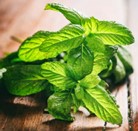
YERBA (HIERBA) BUENA | SPEARMINT (Mentha cordifolia)
PAIN RELIEF
To drink as a tea or decoction, Yerba Buena leaves must be washed thoroughly under running water, chopped, and then crushed. Take 2 teaspoons of the crushed leaves and boil it in a cup of water over medium heat for 15 to 20 minutes. To relieve pain, you can drink 1 cup every 3 hours.

SAMBONG | NGAI CAMPHOR (Blumea balsamifera)
KIDNEY STONES
Boil chopped leaves in a glass of water for 15 minutes until one glassful remains. Divide decoction into 3 parts, drink one part 3 times a day.
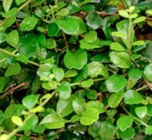
TSAANG GUBAT | FUKIEN TEA TREE (Carmona retusa)
DIARRHEA, STOMACHACHE
Wash the Tsaang Gubat leaves with water. Chop the leaves until you have a cup of it. Boil the leaves in 2 cups of water over medium heat for 15 to 20 minutes. For diarrhea, drink 1 cup of tea every 4 hours. To improve general health, drink 1 cup of your prepared tea per day.

NIYOG-NIYOGAN | RANGOON CREEPER (Combretum Indicum)
PARASITIC WORMS
Make sure that you only use dried matured seeds. The mature seeds are eaten raw, usually after dinner. For adults, take at least 10 niyog-niyogan seeds. Children aged 4 to 7 years old can take at least four seeds. Children aged 8 to 9 years old can take around six seeds. Children aged 10 to 12 years old can take around seven seeds at a maximum.

GUAVA (Psidium guajava)
SKIN ANTISEPTIC
Boil a fresh cup of Bayabas leaves in three to four cups of water for 10 minutes. Strain the decoction and let it cool. To use as an antiseptic, wash the wound or affected area with the concoction at least twice a day. It also promotes faster healing as a vaginal wash after childbirth. To treat skin disorders, apply to affected area using cotton ball or cotton pad.
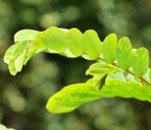
AKAPULKO | CANDLE BUSH (Cassia alata)
ANTIFUNGAL
Wash the plant thoroughly before using. Pound the leaves and apply the extract directly to the affected area. You can apply the extract at least two times a day, until the problem area is cured.
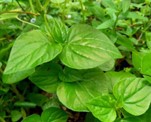
ULASIMANG BATO | SILVER BUSH (Peperomia pellucida)
URIC ACID
To prepare the tea for the alleviation of pain, especially one caused by arthritis: prepare 1 cup of stalk and leaves, wash thoroughly, and then boil it in 2 cups of water. Drain and then drink a cup once in the morning and again in the evening.
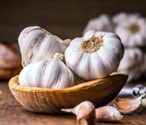
BAWANG | GARLIC (Allium sativum)
HIGH CHOLESTEROL
Generally, garlic can be eaten raw. It may also be fried and roasted. It can also be soaked in vinegar for at least 30 minutes or boiled in water for around 5 minutes. You can take 2 pieces of bawang three times a day, after meals.

AMPALAYA | BITTER GOURD (Momordica charantia)
DIABETES
As a type of herbal tea, you can use ampalaya leaves, seeds, and flowers. Soak in 4 cups of boiling water for at least 10 minutes. Set aside and strain after cooling. You can take this tea at one cup a day.
It is still important to consider that although these medicinal plants are scientifically proven already for efficacy, you should still consult with your doctor if you have pre-existing health conditions and is taking other medication/s before making any changes with your diet and drug intake. Moreso, pregnant and breastfeeding moms must also be mindful of the correct dosage, contraindication/s before trying any of these herbal remedies.
References:
Bunag, R. L. N. (2020, May 30). Tsaang Gubat Herbal Medicine Benefits – Hello Doctor Philippines. Hello Doctor. https://hellodoctor.com.ph/herbals-and-alternatives/tsaang-gubat/
Bunag, R. L. N. (2021, February 15). Yerba Buena Plant Benefits: 4 Ways to Use it for Your Health. Hello Doctor. https://hellodoctor.com.ph/herbals-and-alternatives/herbal-medicines/yerba-buena-plant-benefits/
Bunag, R. L. N. (2021, September 8). Sambong Benefits: Alleviating Hypertension to Preventing Kidney Stones. Hello Doctor. https://hellodoctor.com.ph/herbals-and-alternatives/herbal-medicines/sambong-benefits/
Bunag, R. L. N. (2021, September 20). Ulasimang Bato for Gout and Arthritis Pain. Hello Doctor. https://hellodoctor.com.ph/herbals-and-alternatives/herbal-medicines/ulasimang-bato/
Gabasa, D. (2020, October 12). Bawang Uses and Benefits: A Guide to Herbal Medicine. Hello Doctor. https://hellodoctor.com.ph/herbals-and-alternatives/herbal-medicines/bawang-uses-benefits/
Gabasa, D. (2021, May 6). Niyog-Niyogan: Herbal Medicine Benefits | Hello Doctor Philippines. Hello Doctor. https://hellodoctor.com.ph/herbals-and-alternatives/herbal-medicines/niyog-niyogan/
Gabasa, D. (2021, September 8). Ampalaya Leaves Medicinal Uses and Benefits. Hello Doctor. https://hellodoctor.com.ph/herbals-and-alternatives/herbal-medicines/ampalaya-leaves/
Gabasa, D. (2021, September 8). Lagundi for Cough and Asthma | Hello Doctor Philippines. Hello Doctor. https://hellodoctor.com.ph/herbals-and-alternatives/herbal-medicines/lagundi-for-cough-and-asthma/
Gabasa, D. (2021, September 13). Akapulko Plant as Herbal Medicine: All You Need To Know. Hello Doctor. https://hellodoctor.com.ph/herbals-and-alternatives/herbal-medicines/akapulko-plant/
Gabasa, D. (2021, September 15). Using Bayabas as Herbal Medicine: A Guide. Hello Doctor. https://hellodoctor.com.ph/herbals-and-alternatives/herbal-medicines/bayabas/
Lagundi: Anti-cough and anti-asthma medicine. (n.d.). Philippine Council for Health Research and Development. Retrieved November 3, 2022, from https://www.pchrd.dost.gov.ph/heartnovation/lagundi-anti-cough-and-anti-asthma-medicine/
Maramba-Lazarte, C. C. (2020). Benefits of Mainstreaming Herbal Medicine in the Philippine Healthcare System. Acta Medica Philippina, 54(1). https://doi.org/10.47895/amp.v54i1.1078
Principe, E., & Jose, A. (2002). Propagation Management of Herbal and Medicinal Plants. Research Information Series on Ecosystems, 14(2). https://erdb.denr.gov.ph/wp-content/uploads/2015/05/r_v14n2.pdf
Silver, N. (2021, February 24). Bitter Melon and Diabetes. Healthline. https://www.healthline.com/health/diabetes/bitter-melon-and-diabetes
